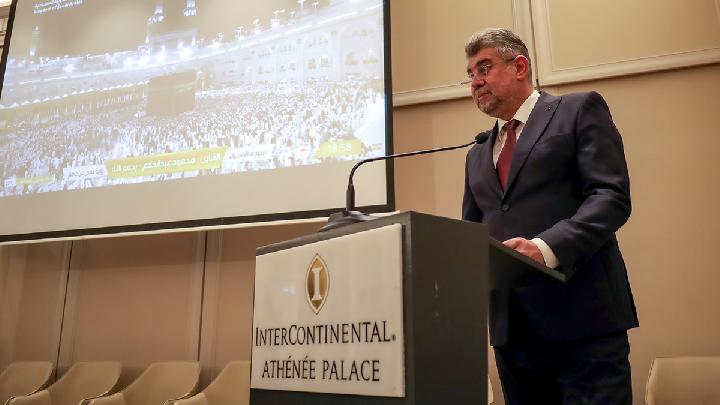By: Lachlan Guselli, 360info in Adelaide.
Myanmar's ruling junta is currently vulnerable after sustained fighting by a range of dissident groups, so who are the groups behind the recent unrest?
Since a military coup in 2021, Myanmar has descended into economic crisis and brutal civil conflict with a complex array of ethnic armed groups supported by civilians-turned-insurgents fighting the army.
A year-long offensive by opposition groups, called Operation 1027, has put the military junta's control of the country under serious threat.
These opposition forces have made significant gains, but who are they?
Who's fighting who
Since Burma/Myanmar achieved its Independence from Britain in 1948 there have always been parts of the country in a state of civil war. These conflicts have entailed both ideological struggles — which included the Communist Party of Burma — and, since the 1990s, conflicts increasingly along ethnic lines.
The country comprises a patchwork of ethnic minorities who are sometimes at war with each other, but, more often, with the Myanmar military itself, which is dominated by the Burman/Bamar ethnic majority.
This history of conflict is extraordinarily complex.
Myanmar was afflicted by five decades of military rule until 2011, and after a decade of liberalisation and reformist governments, it returned to that state after the military's illegal 2021 coup.
Ethnic armed groups, such as the Karen National Liberation Army (KNLA) and Kachin Independence Army (KIA), have been fighting for greater autonomy since 1948 , and, for much of that time, have controlled significant borderland regions of Myanmar with Thailand and China.
More recently, the Arakan Army, founded in 2009, now controls much of Rakhine State along the country's western border with Bangladesh, where the Muslim Rohingya also live.
In addition to the ethnic armed groups, since the coup, there has been the formation of militant People's Defence Forces (PDFs) across the country, made up of students, teachers, lawyers and other civilians who oppose the military junta and are fighting for democracy.
These groups sometimes, but not always, operate under the direction of the exiled opposition National Unity Government (NUG).
More commonly, they train and work with various ethnic armed groups, who often have decades of military experience along with established systems of administration in the ‘liberated areas' they control.
In October last year, the Three Brotherhood Alliance, comprising the Arakan Army, and the Myanmar National Democratic Alliance Army (MNDAA) and the Ta'ang National Liberation Army (TNLA) from Myanmar's eastern Shan State, launched Operation 1027 against the military.
They made immediate gains, and after the MNDAA took over the cyber-scamming centre of Laukkai in the northern Shan State on the Chinese border in January, China brokered a ceasefire between the belligerents.
In June, however, the ceasefire broke down. In July, the MNDAA announced they had captured Myanmar military's Northeast Regional Military Command, as well as Lashio, Shan State's second biggest town on the strategic highway from Mandalay to the border with China's Yunnan Province.
This was the first time one of the military's 14 regional commands around the country had fallen to an ethnic armed group in more than 50 years of military rule.
Since then the junta has lost numerous towns and villages across swathes of northern Shan State, Sagaing Region and Mandalay Region to the Three Brotherhood Alliance, PDFs and other ethnic armed groups with several rocket attacks now hitting Mandalay, Myanmar's second commercial city.
In mid-October, the TNLA captured the town of Hsipaw, which also sits on the highway from Mandalay to the border with China, while the KIA, supported by PDFs, captured a centre of rare earth mining near the border with China in Kachin State.
The KIA has recently achieved several victories against the military with the strategic town of Pinlebu, on the border of Sagaing Region and Kachin State, falling to the KIA, the PDFs and their allies, leading to a rare visit from the NUG Minister of Defence.
Similarly the KNLA, Myanmar's oldest ethnic armed group, recently captured a critical military base near the busy border town of Myawaddy, facing Mae Sot in Thailand, which the KNLA had briefly partially captured in April.
Can the opposition forces succeed in overthrowing the junta?
While the Three Brotherhood Alliance and other groups have chipped away at the military's dominance in the north, east and west, the military has vast experience in counter-insurgency operations and, more importantly for defending major towns, is backed by a military arsenal that includes fighter jets and helicopter gunships.
The UN Special Rapporteur on Human Rights in Myanmar documented more than $US1 billion of weapons and military-related equipment purchases by the junta, primarily from Russia, China and Singapore, in the first two years after the coup.
The military throughout its history has shown no qualms against using these weapons to massacre civilians, with the Special Rapporteur documenting the killing of at least 160 villagers, including children, in the Sagaing village of Pa Zi Gyi, after bombs were dropped by a Russian-made fighter jet and survivors were strafed by two Mi-35 attack helicopters.
Nevertheless, the military has not faced such widespread and committed opposition in the past, and its losses in the last few months demonstrate its vulnerabilities.
While the end game in Myanmar will be driven primarily by the determination of the opposition, the actions of international actors, particularly China, can nevertheless influence the final trajectory of the conflict.
Originally published under Creative Commons by 360info™.
*) DISCLAIMER
Articles published in the “Your Views & Stories” section of en.tempo.co website are personal opinions written by third parties, and cannot be related or attributed to en.tempo.co’s official stance.

 3 months ago
64
3 months ago
64












































